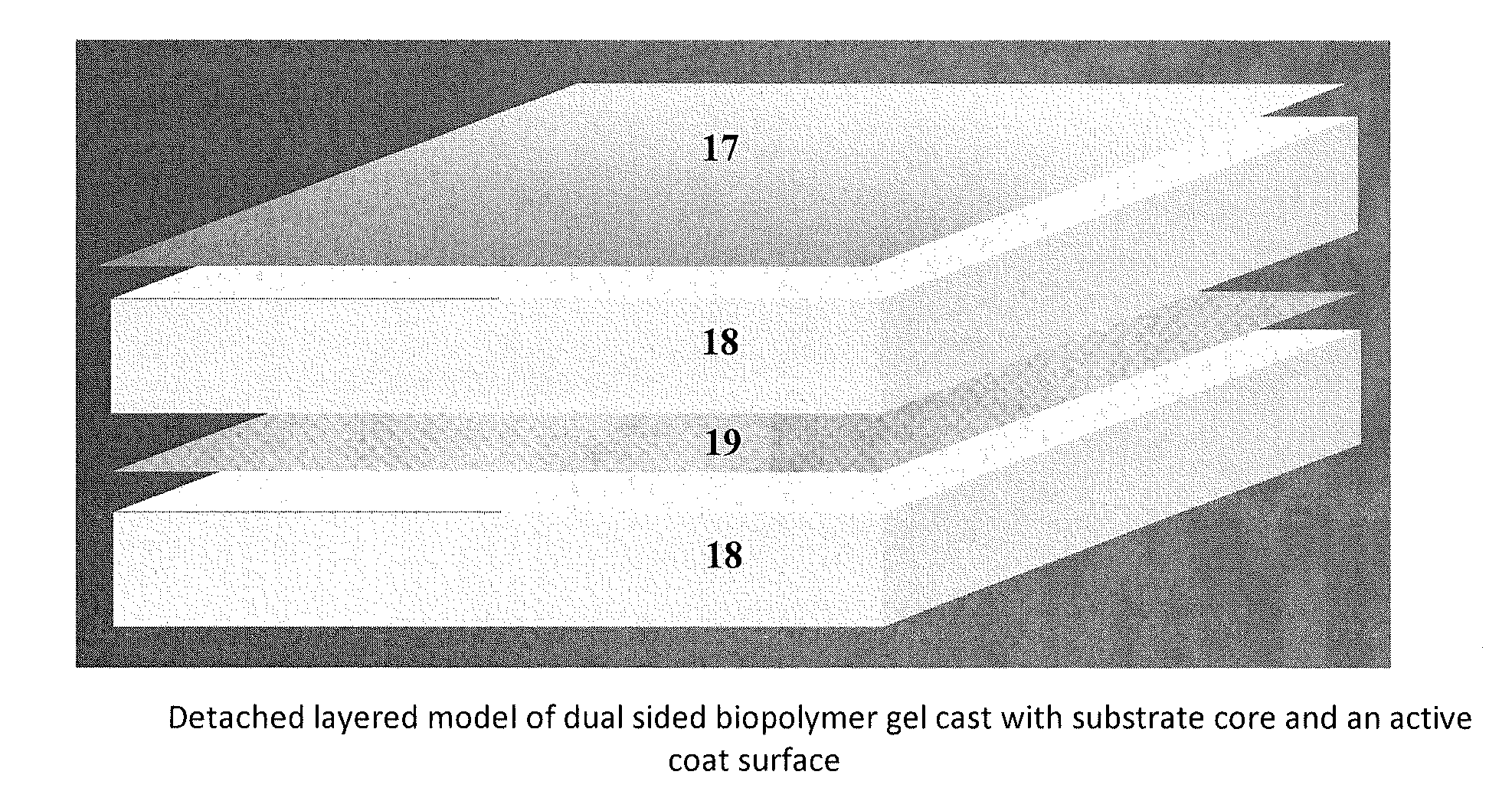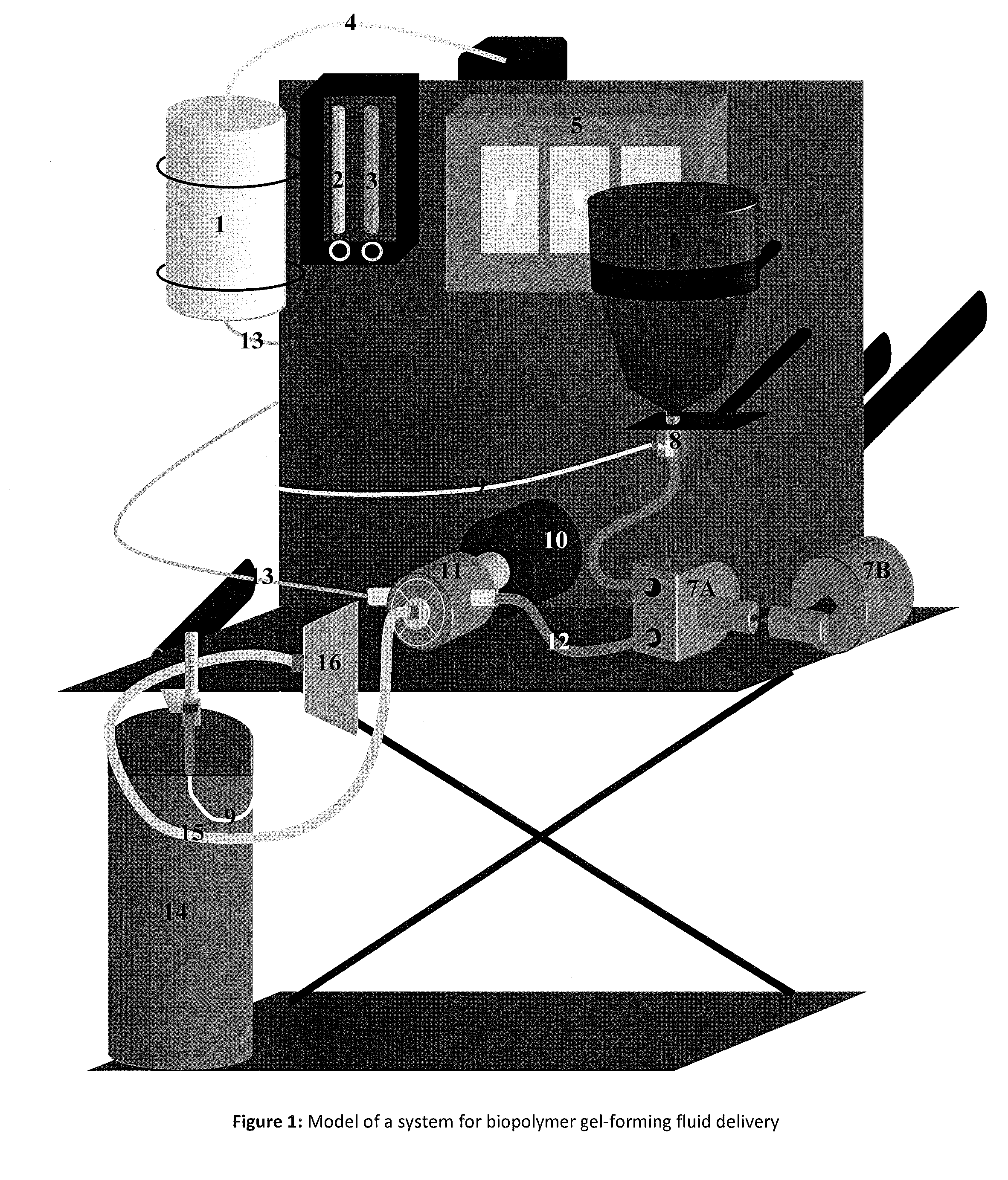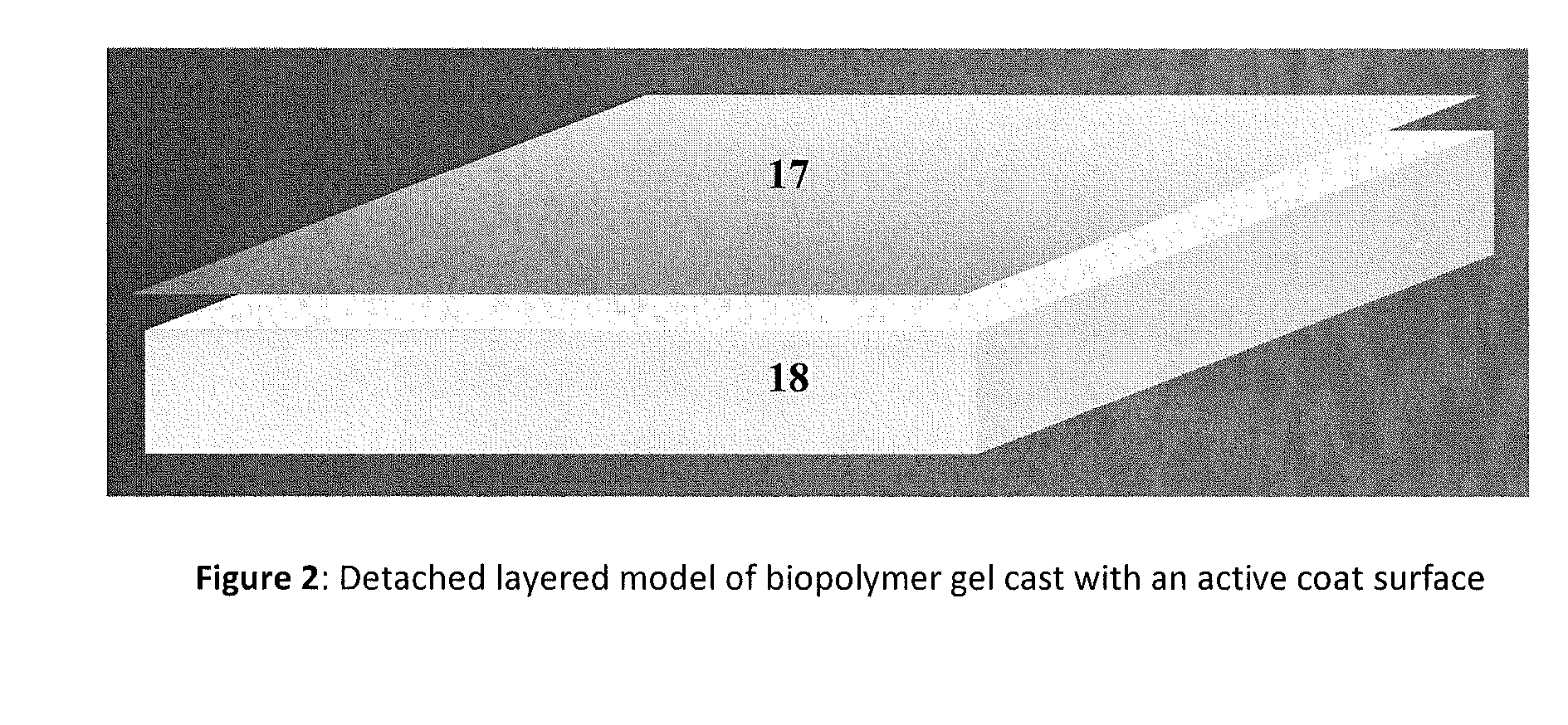Biopolymer multi-layer multi-functional medical dressing and method of making same
a multi-functional, wound-healing technology, applied in the field of advanced wound healing, can solve the problems of reducing the healing effect of wounds, so as to achieve easy wound conformability, high mechanical wet strength, and flexible structure.
- Summary
- Abstract
- Description
- Claims
- Application Information
AI Technical Summary
Benefits of technology
Problems solved by technology
Method used
Image
Examples
example 1
Method for Making the PLA Substrate Layer
[0151]Referring to FIG. 7, Grade 6252D PLA polymer pellets from NatureWorks is utilized from a fresh unopened bag and introduced into the mouth of a 2.5″ 30:1 40-hp extruder and exposed to mechanical shear and heat ranging from 325 to 425° F. as it travels through the system. Filtration followed by a gear pump push the molten polymer thru a heated transfer line into a BIAX meltblown system at 800 to 2000 pounds per square inch (psi). Compressed air is heated to 475-525° F. and introduced into the die at 10-18 psi and used to attenuate the PLA fibers thru nozzles with an internal diameter of 0.012″. A filtered water mist quench is produced using a high-pressure piston pump and a fluid-misting system. This quench is operated at 500-1800 psi and the mist impinges the fibers as they exit the die zone and serves to cool them. An air quench system introduces cool outside air to the fibers before they are deposited on a flat belt with a vacuum sourc...
example 2
Calendering Outer PLA Non-Woven Fiber Layer
[0154]In order to impart different properties to the outer non-woven PLA layer of the wound dressing, calendering can be utilized. We used a BF Perkins (division of Standex Engraving, LLC, Sandston, Va.) Calender Station which contained two heated rolls and two hydraulic rams. Each heated roll was filled with high temperature oil, which was heated by a separate machine. A hot oil machine controlled the temperature and the flow of oil through each zone of the Calender Station. The temperature can range from 110° F. to 550° F. The hot oil was circulated at 30 psi through 2 inch iron pipes into a rotary valve for each zone.
[0155]The Calender Station was opened and closed by a control station which also regulated the amount of pressure used to move the hydraulic rams. This pressure can range from 1 psi to 3,000 psi and maintained the amount of force with which the Drive Roll was supported. A variable spacer between the Sunday Roll (also called ...
example 3
Creation of Multiple PLA Medical Dressing Layers with Silver Antimicrobial
[0160]One PLA layer was laminated to another PLA perforated or apertured film created by uniquely calendering the PLA fibers to provide mechanical cushioning and antimicrobial action. The silver impregnated within the PLA film fibers is the source of antimicrobial efficacy protecting the non-woven against the propagation of bacteria, yeasts, and fungi.
[0161]1AWC-1 and 2AWC-1 are sample identifiers for manufactured PLA non-woven layer with PLA film prepared according to process specifications and properties shown in Table 2. 1AWC-1 is two layers of 50 gsm melt spun PLA integrated with a formulation of silver zeolite grade AC-10D from AgION (Wakefield, Mass.) coupled with silver glass grade WPA Ionpure® from Marubeni / Ishizuka (Santa Clara, Calif.). 2AWC-1 is two layers of 33 gsm melt spun PLA integrated with a formulation of silver zeolite grade AC-10D from AgION coupled with silver glass grade WPA Ionpure® from...
PUM
| Property | Measurement | Unit |
|---|---|---|
| diameter | aaaaa | aaaaa |
| diameter | aaaaa | aaaaa |
| diameter | aaaaa | aaaaa |
Abstract
Description
Claims
Application Information
 Login to View More
Login to View More - R&D
- Intellectual Property
- Life Sciences
- Materials
- Tech Scout
- Unparalleled Data Quality
- Higher Quality Content
- 60% Fewer Hallucinations
Browse by: Latest US Patents, China's latest patents, Technical Efficacy Thesaurus, Application Domain, Technology Topic, Popular Technical Reports.
© 2025 PatSnap. All rights reserved.Legal|Privacy policy|Modern Slavery Act Transparency Statement|Sitemap|About US| Contact US: help@patsnap.com



